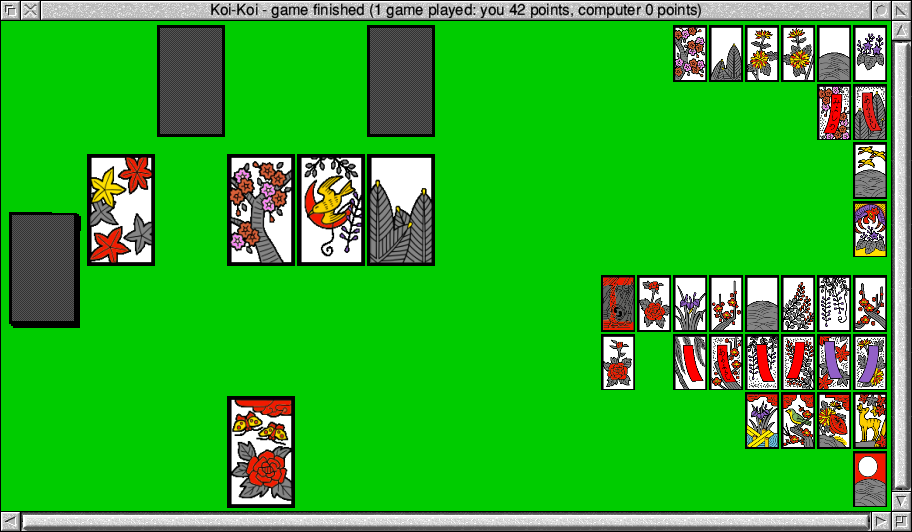It’s a carp-carp card game, doncherknow – but not a version of Go Fish!
Rick Murray has released an implementation of a Japanese two-player card game, pitting you against the computer, called Koi-koi (or “come on”).
The game is played with a deck Japanese playing cards called Hanafuda, which translates as flower cards, and the aim of the game is to accumulate matches, called Yaku. These are pairs of cards of the same suit, and when the game ends, the winner is the player with the most points derived from those pairs.

The description above makes the game sound simple, and at a basic level – in terms of what you have to do – it is. However, there is a degree of difficulty due to the nature of the cards, which you need to be able to recognise, and understand how they relate to each other and thus what they are worth, in order to play well and score as highly as possible.
Unlike Western cards, in which a deck consists of 52 cards, divided up into four suits, Hanafuda decks consist of 48 cards, divided up into twelve suits. Each suit is based around a particular plant1, and represents a month of the year. Separately from the suits, there are also four different categories of card, with a less even distribution; three ‘special’ types of card, of which there are five Brights, nine Animals (also known as Tens), and ten Ribbons, and the remaining 24 cards are Plains. This means that not all suits contain the same number of each type of card, though they are mostly made up of two Plains and two special ones. The exceptions to this are November (one Plain) and December (three).
Both the suits and the types of card are important for the play of Koi-koi; it is the suits that you match, and the card-types that determine how you score, so remembering what type of card is what is key to your success. For example, the Bright cards score highest (which is why there are fewer of them), followed by the Animal cards – but confusingly not all of the Animal cards depict animals, while some of the Bright cards do.
Rick first started writing the implementation back in 2012, having obtained a set of cards and taught himself the game in 2011, but development was largely forgotten due to his working hours. A recent rediscovery of the unfinished code prompted him to finish it off – and it’s now available to download via his blog, and will soon be available from !Store. There is a description of how the game is played as part of the application’s !Help file, but for a more detailed explanation, as well as of the cards themselves, refer to his blog entry from when he first obtained the cards and learnt to play.
!ReadMe
1. Although the name translates as flower cards, the January suit depicts pine, which I believe is not a flowering plant.

